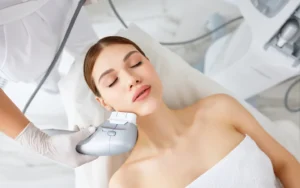Understanding Ultherapy (HIFU) for Facial Rejuvenation
Advancements in cosmetic procedures have continuously evolved. One such innovation gaining traction in non-invasive cosmetic treatments is Ultherapy, also known as High-Intensity Focused Ultrasound (HIFU). This groundbreaking technology offers a non-surgical approach to facial rejuvenation, promising to turn back the hands of time with minimal downtime and impressive results.
Ultherapy Skin Tightening utilizes ultrasound energy to stimulate collagen production, a vital protein for skin elasticity and firmness. Unlike traditional facelift surgeries that involve incisions and anesthesia, HIFU Treatment targets deep layers of the skin without disrupting the surface, making it a preferred option for individuals seeking natural-looking results without the risks associated with surgery. Continuing this article from the beauty department of Dr. Maadico, join us to learn about this Non-Surgical Facelift method.
Understanding Ultherapy (HIFU)
Ultherapy delivers focused ultrasound energy to the foundational layers of the skin, including the deep dermis and the superficial muscular aponeurotic system (SMAS). This targeted energy triggers a natural healing response within the body, producing new collagen fibers. Over time, the treated areas gradually lift and tighten, resulting in smoother, firmer skin.
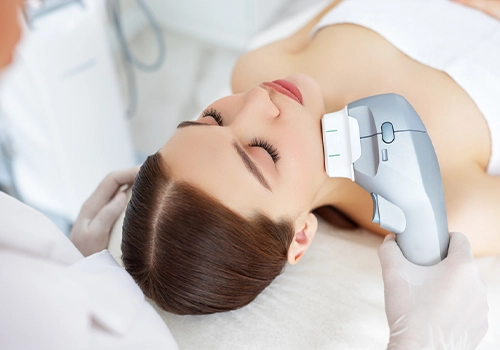
One of the critical benefits of Ultherapy is its versatility. It can effectively target various areas of concern, including the brows, chin, neck, and décolletage. Whether addressing sagging skin along the jawline or refining the contours of the brow, Ultherapy offers customizable treatment options
Benefits of Ultherapy (HIFU for Wrinkles)
- Non-Invasive: Unlike surgical facelifts, High-Intensity Focused Ultrasound requires no incisions, anesthesia, or downtime, making it a convenient option for individuals with busy lifestyles.
- Stimulates Collagen Production: Ultherapy promotes long-lasting skin elasticity and firmness improvements by stimulating the body’s natural collagen production.
- Gradual, Natural-Looking Results: While the initial effects of Ultherapy may be visible immediately after treatment, the full benefits unfold gradually over several months, resulting in natural-looking rejuvenation.
- Minimal Discomfort: Patients may experience mild discomfort during the procedure, but it is generally well-tolerated. Topical anesthesia or oral medication may be used to enhance comfort during treatment.
Who is a Candidate for Ultherapy Treatment?
Ideal candidates for Ultherapy are individuals with mild to moderate skin laxity seeking noticeable improvements without surgery. While HIFU can effectively address early signs of aging, it may not produce the same dramatic results as surgical procedures for more advanced cases of sagging skin.
It is essential for patients considering Ultherapy to have realistic expectations and to consult with a qualified healthcare provider to determine if they are suitable candidates for the treatment.
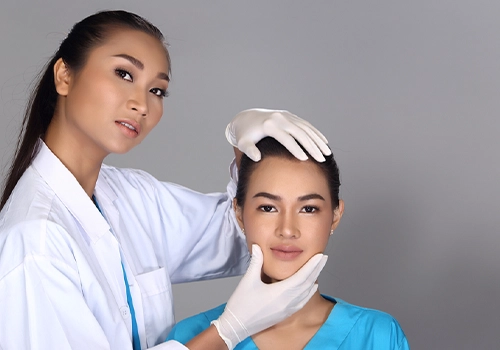
Who are the best candidates for this process?
- Mild to Moderate Skin Laxity: Ideal candidates typically have skin laxity that is not severe enough to warrant surgical intervention but significant enough to benefit from non-invasive treatments. Common signs include mild sagging along the jawline, cheeks, or brows.
- Ages 30 and Above: While there is no specific age requirement for Ultherapy, it is most commonly sought after by individuals in their 30s and older. As collagen production naturally declines with age, Ultherapy can help counteract the effects of aging by stimulating collagen renewal.
- Good Overall Health: Candidates should be in good general health with realistic expectations about the procedure’s outcomes. While Ultherapy is generally safe for most individuals, those with underlying medical conditions or contraindications may not be suitable candidates.
- Preventative and Corrective Treatment: Ultherapy can serve both preventive and corrective purposes. Younger individuals may opt for Ultherapy as a proactive measure to maintain skin firmness and delay the onset of visible aging. In comparison, older individuals may seek it to address signs of sagging and laxity.
- Commitment to Skin Care: Candidates should be committed to maintaining their skin health through proper skincare routines and sun protection following the procedure. While Ultherapy can produce significant improvements, long-term results are best preserved with good skincare habits.
- Realistic Expectations: Candidates must have realistic expectations about the outcomes of HIFU Facial Rejuvenation. While the treatment can produce noticeable improvements in skin laxity and firmness, it may not achieve the same level of transformation as surgical procedures like facelifts.
- Consultation with a Qualified Provider: Before undergoing Ultherapy, candidates should schedule a consultation with a qualified healthcare provider or licensed practitioner experienced in performing the procedure.
Understanding the Cost of Ultherapy
The cost of Ultherapy can vary depending on various factors, including the treatment area, the extent of correction needed, and the provider’s expertise. On average, a single Ultherapy session can range from several hundred to several thousand dollars. While the upfront cost of Ultherapy may seem higher than other non-invasive treatments, its long-term benefits and minimal maintenance requirements make it a cost-effective investment in one’s appearance.
1.Treatment Area: The cost of Ultherapy can vary depending on the area being treated. Treatment of smaller areas, such as the brows or upper lip, may be less expensive than larger areas like the full face or neck.
2.Extent of Correction Needed: The degree of skin laxity and the amount of correction required can impact the overall cost of Ultherapy. Individuals with mild to moderate skin laxity may require fewer treatment sessions and incur lower costs than those with more pronounced sagging.
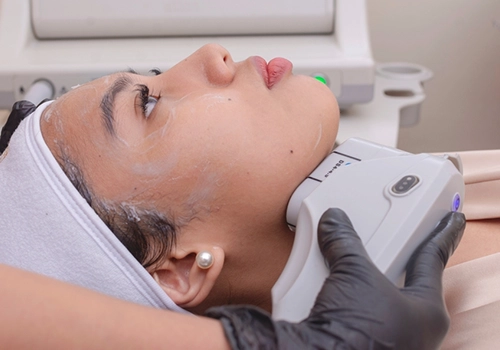
3.Geographical Location: The cost of cosmetic procedures, including Ultherapy, can vary significantly depending on the region and city where the treatment is performed. Urban areas and regions with a higher cost of living may have higher treatment costs than rural areas.
4.Provider’s Reputation and Expertise: Experienced and reputable providers may charge higher fees for Ultherapy due to their expertise, qualifications, and track record of delivering quality results. Choosing a provider with a proven reputation for safety and efficacy is essential, even if it means paying a higher price.
5.Pricing Structure: Some clinics may offer package deals or discounts for multiple treatment sessions, which can help reduce the overall cost of Ultherapy. Inquiring about any special offers or promotions available when booking is advisable.
6.Additional Fees: In addition to the base cost of Ultherapy, individuals should inquire about any additional fees that may apply, such as consultation fees, facility fees, or post-treatment care products. These costs should be factored into the overall treatment budget.
Cost vs. Value
While the upfront cost of Ultherapy may seem significant compared to other non-invasive treatments, it’s essential to consider its long-term value and benefits. Unlike temporary solutions such as fillers or injectables, Ultherapy stimulates collagen production, resulting in gradual improvements lasting up to 1-2 years or more.
Additionally, the non-invasive nature of Ultherapy means minimal downtime and fewer associated risks compared to surgical procedures like facelifts. For many individuals, the long-lasting results and minimal maintenance requirements make Ultherapy a cost-effective investment in their appearance and self-confidence.
Safety and Considerations
Choosing a reputable provider with extensive experience performing Ultherapy treatments is essential as with any cosmetic procedure. While Ultherapy is generally considered safe, minor side effects such as redness, swelling, and temporary discomfort may occur following the procedure. These effects typically resolve within a few days to weeks, allowing patients to resume normal activities with minimal interruption.
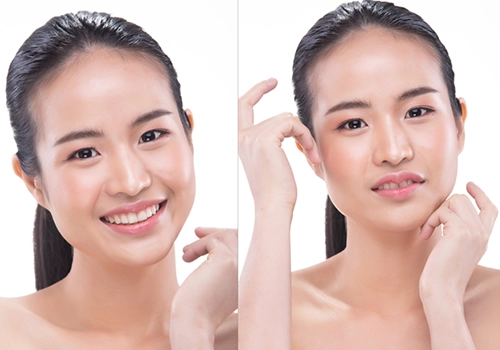
Patients must follow post-treatment care instructions provided by their healthcare provider to optimize results and minimize the risk of complications.
Qucik Facts about HIFU Treatment
| Aspect | Information |
| Procedure Type | Non-invasive |
| Treatment Areas | Face, neck, décolletage |
| Mechanism | Uses focused ultrasound energy to stimulate collagen production |
| Pain Level | Mild discomfort, well-tolerated |
| Side Effects | Minor redness, swelling, temporary discomfort |
| Treatment Time | 30 minutes to 1 hour per session |
| Results | Gradual, visible improvements over several months |
| Duration of Results | Up to 1-2 years or more |
| Ideal Candidates | Mild to moderate skin laxity |
| Downtime | Minimal, immediate return to normal activities |
Conclusion
Ultherapy (HIFU) represents a revolutionary approach to facial rejuvenation, offering a safe, non-invasive alternative to traditional surgical procedures. By harnessing the power of focused ultrasound energy, Ultherapy stimulates collagen production, resulting in gradual, natural-looking improvements in skin laxity and firmness.
As with any cosmetic treatment, it is essential for individuals considering Ultherapy to educate themselves about the procedure, understand its benefits and limitations, and consult with a qualified healthcare provider to determine if they are suitable candidates. With proper care and guidance, Ultherapy can help unlock the youthful glow many desire, empowering individuals to look and feel their best at any age.
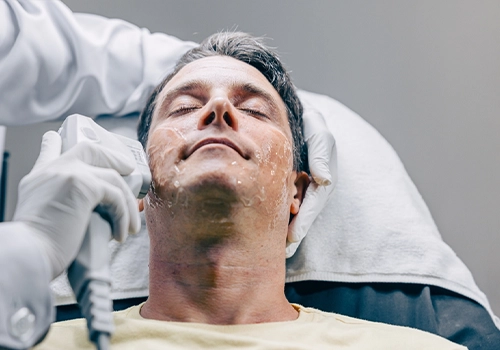
Faqs about Ultherapy Treatment
What is Ultherapy?
Ultherapy is a non-invasive cosmetic procedure that uses focused ultrasound energy to lift and tighten the skin, targeting areas such as the face, neck, and décolletage.
How does Ultherapy work?
Ultherapy stimulates collagen production deep within the skin, gradually lifting and tightening over time.
Is Ultherapy painful?
Patients may experience mild discomfort during the procedure, but it is generally well-tolerated. Topical anesthesia or oral medication can be used to enhance comfort.
Are there any side effects?
Minor side effects such as redness, swelling, and temporary discomfort may occur but typically resolve within a few days to weeks.
How long does Ultherapy take?
Treatment times vary depending on the areas being treated, but a typical session can last anywhere from 30 minutes to 1 hour.
When will I see results?
While some patients may notice immediate improvements, the full benefits of Ultherapy unfold gradually over several months as collagen production increases.
How long do Ultherapy results last?
Results can last up to 1-2 years or more, depending on individual factors such as skin type, age, and lifestyle.
Who is a suitable candidate for Ultherapy?
Ideal candidates are individuals with mild to moderate skin laxity seeking noticeable improvements without surgery.
Can Ultherapy be combined with other treatments?
Ultherapy can be combined with other cosmetic procedures such as injectables or laser treatments to enhance overall results.
Is there downtime after Ultherapy?
While some patients may experience temporary redness or swelling, there is typically no downtime, allowing individuals to resume their normal activities immediately after treatment.


